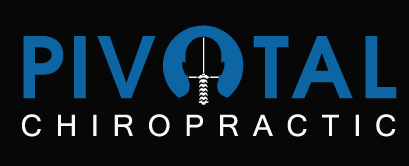How to Treat Ligament Injuries
In a previous article about ligament injuries, we discussed the process by which a ligament is injured and then the phases of healing.
What you should do after the injury? More importantly, how do you know if you have a ligament injury?
Did you tear a ligament or is it just a pulled muscle?
A trained chiropractor or medical provider can assess if an injury resulted in a pulled muscle, or sprain or tear of a ligament. This is determined through a comprehensive evaluation of the injured area. Generally, when a ligament is damaged, you will notice pain, swelling, and sometimes bruising. If the ligament is torn or ruptured, in addition to extreme pain, it may feel loose or weak, like the joint will give out. Depending on the severity of the injury, the proper course of treatment is essential to ensuring adequate healing.
Most minor ligament sprains will heal on their own if they’re taken care of properly. In the case of a ruptured or torn ligament, surgery may be required to fix the damage along with physical therapy to regain strength and range of motion.
If a ligament injury is minor, there are a few things you can do on your own to ensure proper healing:
- Heat and motion:
Many healthcare providers will focus on icing an area of the body that was injured. This is true for the first 24-48 hours, but after that, heat is the better option. Heat promotes blood flow into the injured tissue. Remember the phases of healing that I we discussed in the previous post – enhancing blood flow is key to the healing process. More blood flow = more oxygen and nutrients flowing into the damaged tissue. This also means more byproducts of the healing process flowing out of the damaged area. Along with heat, active range of motion and light cardio can help with increasing blood flow and range of motion. For example, with a knee or ankle injury, use a stationary bike to move the joint through its normal range of motion while increasing your heart rate.
- Don’t immobilize:
All too common when a person injures a ligament, their healthcare provider tells them to wear a brace or wraps the area to immobilize it. Research shows that “immobilization causes ligament physiology to progressively change from anabolic to a more catabolic state. This means that the ligament tissue breaks down and is much weaker when it is immobilized. On the other hand, when the tissue is exercised, research shows there is a direct correlation between the number of collagen fibrils, their arrangement, and their average thickness with the ligament.
“In a systematic review, early mobilization was found to decrease pain, swelling and stiffness, to preserve more of the ligament’s range of motion, and to result in a quicker return to work.”
This means that with movement the ligament tissue heals faster and stronger. In the case of a major ligament rupture, surgery along with casting may be necessary in the beginning stages, but a guided exercise routine will be necessary to ensure adequate healing as time progresses.
- Diet:
We all know that the SAD diet or Standard American Diet, which is high in saturated fats, trans fats, refined carbohydrates and sugar is a major contributor to many health problems in the US. This diet “causes poor circulation in the microscopic blood vessels that carry oxygen and nutrients to joints and ligaments.” Your diet healing should include a high level of micronutrients to help support collagen growth, repair, and wound healing. This includes foods such as: lean meats, salmon, eggs, seeds, nuts, whole grains, leafy greens, kale, spinach, broccoli, cauliflower, sweet potatoes, kiwi, peppers, and strawberries just to name a few. In addition to nutrient rich foods, increasing water intake will help with blood circulation and flushing the body of toxins.
- Supplements:
Many of the foods that are listed above contain the nutrients necessary in for ligament and wound healing. Additionally, utilizing supplements to enhance the volume of these nutrients can be beneficial to many individuals. I highly recommend everyone supplements with Omega-3 and Vitamin D not only for ligament healing, but for general overall health and well-being. Omega-3s have been shown to aid in cardiovascular and central nervous system health and help with controlling inflammation. Vitamin D has been shown to have an effect on immune function. People who are Vitamin D deficient have a lower functioning immune system and we all know how important that is.
If you’ve recently had a ligament injury or have decreased mobility and chronic pain due to an older injury, chiropractic care can help.
Pivotal Chiropractic is a great option for treating an injury, especially during the COVID-19 era when it’s harder to see our regular doctors or go to urgent care for help. Your chiropractor can work in collaboration with your team of doctors to make sure your injury heals properly.
For a free consultation to get more information, contact Dr. Gessert today!


